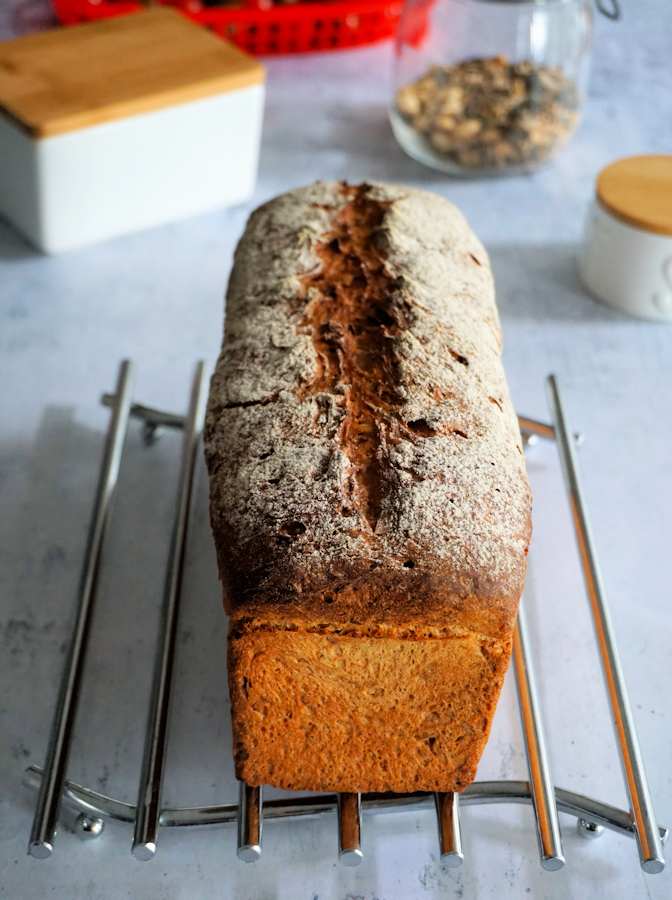Porridge bread made with overnight soaked oats, linseed, sunflower and honey. It’s crumb is tender and mildly sweet, it’s easy to make and - healthy factor – it benefits from overnight sponge fermentation.

Can you make bread with leftover porridge?
Perhaps, but why would you want to? It isn’t too much of a chore covering oats and a few seeds in a bowl with boiling water to soak and swell overnight. And to my mind ‘leftover porridge’ is on par with unicorns – such thing does not exist.
Porridge is the argument that won me over after years and years of skipping breakfast. Porridge can be completely austere if you cook it with water and season with but a pinch of salt. And it can be a true feast when simmered on whole or coconut milk with dried cranberries, topped with yoghurt or crème fraiche and drizzled with a golden rivulet of honey.
Porridge works all day
Porridge is breakfast but it can wear a lunch hat too – savoury, with fresh radish and cucumber. Porridge can be made from oats, semolina or barley, rice flakes and even millet. I sometimes cook couscous for breakfast and call it porridge too.
How to make and bake porridge bread
This is taking the most common porridge material, oats, into a bready dimension. I remember baking this bread years ago, losing the recipe and then rediscovering it in Dan Lepard’s Short & Sweet bakery book.
I like the fact that it’s a staggered recipe – who wants to get up in the morning and sweat through the whole breadmaking process in one go? This takes a leisurely pace: sponge with a little yeast is made in the evening and ferments overnight. Side by side, the ‘porridge’ mixture steeps and softens.
In the morning the dough is made but in a slightly different manner than bread bakers are used to – it starts like shortcrust pastry, by rubbing butter into the flours mix.
The sponge and porridge need to be combined now and it’s easily done just with a spatula or a wooden spoon. Beat one into the other until the bread equivalent of wet ingredients is made.
Kneading can be done in a standing mixer, with a hand mixer with dough hooks attached, or in the bread machine (which really is only good for that once you get to a level of bread proficiency).
Once shaped, the loaf goes into a buttered loaf tin. Hard fats won’t amalgamate with the dough so it’s better to use that to grease the tin with especially sticky doughs. Proving, baking – and the final brownie point this loaf scores is that you can slice it reasonably well when it’s still very warm. A thickly buttered slice of warm porridge bread – that’s contentment.